Grade 6 students worked on a Refugee Stories project this term, writing stories, and creating artwork reflecting on what they have learned about the experience of a refugee coming to Canada. The process began in January, starting with research on human rights and the way these rights are violated around the world.
The first activity was a refugee simulation, which lasted a few hours. The girls pretended they were in families, in groups of six or seven, and each chose a role to play. They were blindfolded to simulate smoke in their eyes, and they had to hold hands and try and find their “family” in the dark. A string was used to represent the border and they had to cross without touching it. If they touched the string, the whole family was sent back and had to start over. At the makeshift “refugee camp” in our Bentley Room, the girls were given cold beans and rice to eat. Sitting on the floor, they had to fill out passport paperwork, but the sheets had no writing on it—just symbols to show how it might be for a refugee who doesn’t read English.
After the simulation, the girls were tasked with writing a reflection or a story about the experience. Maddie and Miranda, from 6H, felt that even though the simulation was uncomfortable, it really made them think. “Putting ourselves in their shoes, with bad food and living conditions, made us feel we should be grateful for what we have,” said Miranda. Clearly, the simulation had some impact.
Next, the Grade 6s explored the idea that many human rights violations cause people to become refugees, and that these crises cause refugees to end up in other places, including Vancouver. While thinking about what that might be like, the girls interviewed refugees in pairs to learn about the experience of becoming a refugee, travelling across the world and having to leave everything they have known behind in order to find safety. They prepared interview questions and either interviewed someone by phone or in person at Mosaic, a refugee organization in Vancouver. The people they interviewed came to Canada anywhere from 50 years ago to a few years ago, from various places such as Syria, Serbia, DRC, Eritrea, and Vietnam.
Eashaar and Julia in 6Y went to Mosaic to interview Nisreen, who has only been in Canada for five years after immigrating to Vancouver with her husband and seven children. She fled Syria after the outbreak of the civil war in 2011, ending up in the Zaatari refugee camp in Jordan for two years; a camp equipped with only one washroom and one kitchen for hundreds of families.
Nisreen eventually received her visa but still has family in Syria as well as in the camp in Jordan, and a brother in Germany. She sends money to all of them. Through their interview, Eashaar and Julia discovered that even though Nisreen liked her life before the war, and is struggling in Canada because her English is not as strong as her Arabic—she has no desire to go back to Syria.
Maddie and Miranda in 6H interviewed Cedar (pronounced “Sidar”), a Syrian refugee, over the phone. Cedar came to Vancouver with her husband when she was 24 while she was pregnant with her first child. In Syria, she had been studying to become a music teacher. Maddie and Miranda describe her journey as treacherous. “When they started dropping bombs, they left immediately,” the girls explained. “She took her clothes, wedding ring, wedding photos and left everything behind.”
Maddie described the harrowing experience when the van that Cedar was escaping in was stopped. “Cedar was so brave when she stood up against those who tried to rob the refugees. She refused to give up her valuables—she could have been killed!”
Now, Cedar looks after her two children at home and tries to learn English by talking to her neighbours. Her husband has three jobs and takes English classes. “She is still really sad. She cries because she misses her family who chose to stay in Syria,” said Maddie and Miranda. “She would like to go back and visit one day but would not stay as she likes Canada. She wants to raise her family here.”
After the interviews, the Grade 6s documented what they learned about their experience in a written story accompanied by visual artwork they created. They also researched the country and the crisis that occurred causing these people to become refugees. Finally, they reflected on their own experience in a written piece: what they learned from the experiences of refugees and also, what they learned about the process of conducting interviews, and how lucky they are to never have lived through a similar experience.
Eashaar and Julia were both surprised to learn that a refugee could live in a camp for years and that someone could become a refugee six of seven times over, as another refugee named Vian had done. “I learned how hard their lives are; it’s a rollercoaster, up and down,” said Eashaar, who herself recently emigrated from England, leaving all her friends and family. “They lived through something very dangerous. They were lucky to all survive,” said Julia.
For Maddie, this project has reminded her not to take things for granted. “We have a lot of privileges; a family, a house, cars, and money.” Miranda has learned to put things into perspective. “Cedar had a really nice, happy life. A war started and her life and dreams were ruined; she had to leave her family behind. It really makes you stop and think when you are upset because you didn’t get the book or shirt you wanted.”
The Grade 6s maintained email contact with the person they interviewed to share their work. The girls also invited them to attend the culminating exhibition at the end of May.





























